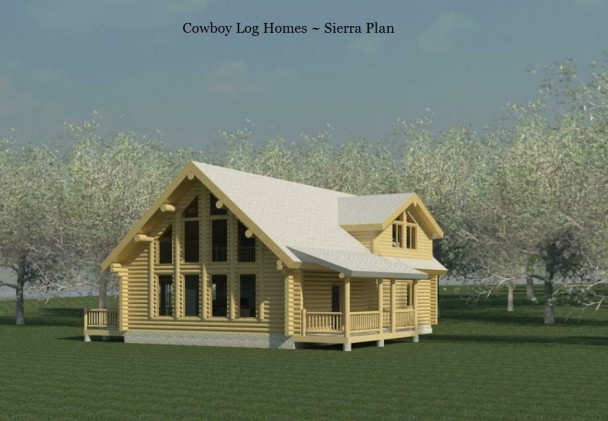Heat Systems and Log Homes
Sue | March 20th, 2018 - 12:04 pmAll log homes need a heat system of some sort. Over the years we have seen homeowners put many different kinds of systems in log cabins. Factors such as climate and what fuel sources are available all impact the final choice of which heating system is the best option for your new home. Typically, banks require a standard heat system of some sort, even if you are planning to heat primarily with firewood.
Heat Systems in Log Homes
A forced air system is probably the most common. When a log home has bedrooms built in the loft area the heat is usually brought up from the basement through the first floor in a channel built into the back of a closet. A high efficiency furnace provides a clean heat source. It is also very easy to add air conditioning when the duct work is in place.
Radiant floor heat is another style that we see often. The warm floors though out the house make for a nice atmosphere. This kind of system also does not leave the air as dry as a forced air system.
Wood burning stoves are very common in log homes. The smell of the fire is part of the appeal of a cabin to some owners. If the power goes out it is a comfort to know the wood burner can keep the house from freezing. Drawbacks to wood burners are the constant need to clean ashes out of the stove, ashes and firewood making the house dirty, and also the constant need to fill it with wood.
Pellet stoves are our least favorite means of heating. A pellet stove should not be depended on as the primary heat source. These stoves have proven to be unreliable, constantly requiring repairs, dirty to clean. Most pellet stoves have hoppers that only hold enough fuel for about 12 hours. The stove also has to be cleaned out every day when it is kept burning consistently.
Electric base board heat is clean to burn but expensive. As energy costs rise this source of heat skyrockets in costs.
Solar power is a clean heating alternative. Much research and development has gone into improving the efficiency and cost of this renewable energy source over recent years. Some homeowners operate entirely on solar power, while others are still tied into the grid but the store solar power with batteries.
Fuel Choices
Natural gas is an economic clean burning energy source. Gas furnaces are set up to operate with natural gas.
When natural gas is not available propane is a common choice. Often log homeowners will choose to purchase a 1000 gallon propane tank, or larger, and bury it on their property. When propane is going to be used the furnace has to be changed over to that type of fuel.
Wood is a common choice. It is readily available in many areas of our country.
Coal can usually be burned in a wood burning furnace.
Electric is readily available to all homes that are tied into the electric grid.
I believe in the future that more and more homes will be taking advantage of renewable energy sources such as wind and solar power. When a home is tied into the electric grid it is neat to receive a credit back from the electric company when they have to purchase your excess energy.
Having a heat system that suits your needs is very important. If you enjoy cutting firewood, be sure to put a wood burner in your house. To help keep the dirt out of the house, our one neighbor put his wood burning furnace and boiler in the garage and then piped the hot water heat over to the house underground.
Another family had a young daughter who constantly got nose bleeds. When they built a new house they put in radiant heat with old fashioned radiators in each room and she didn’t have any further trouble.
So be wise and choose a heat system for your new log home that suits your needs and your lifestyle.


